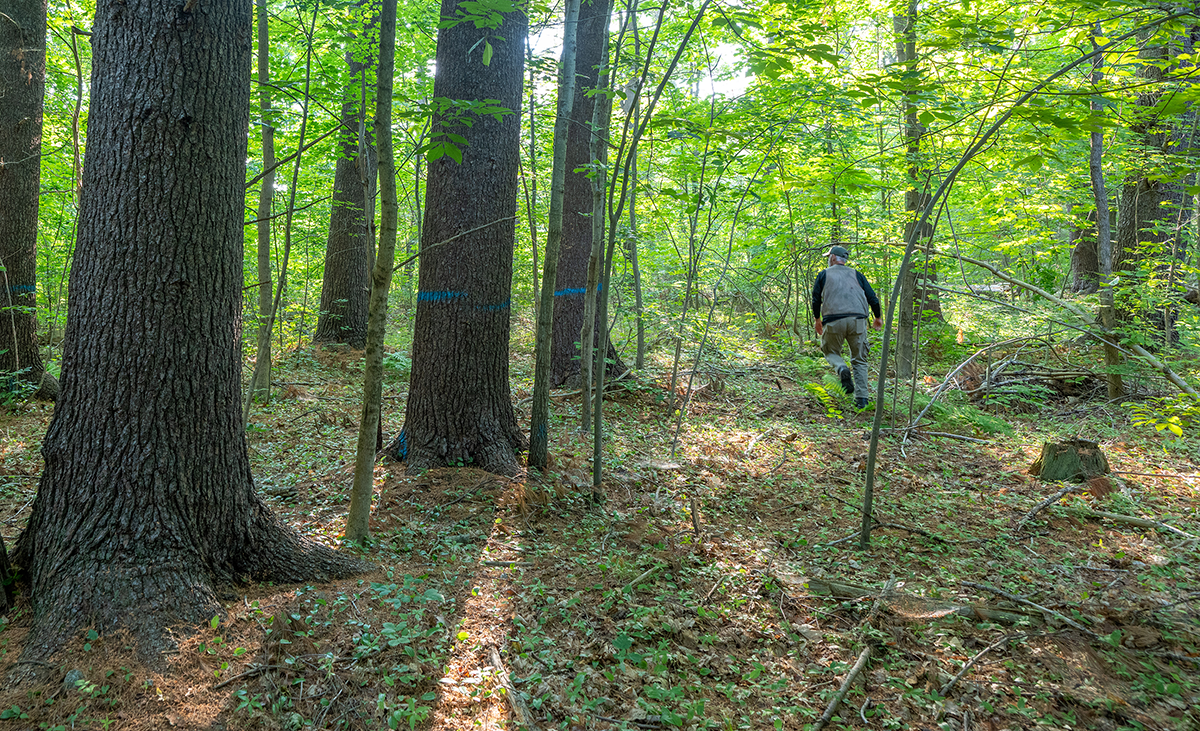The field of forestry involves a lot more than just harvesting trees, but when people ask NEFF about forestry and climate change, they often understandably want to know about the climate impacts of cutting down trees. So, while we could cover a range of forestry-and-climate topics on this page, we’re going to focus on how climate-smart harvesting for wood intersects with the economy and more, and on how that harvested wood’s carbon footprint compares to other building materials.
How often do you sit on wooden furniture, walk on wood floors, open a cardboard box, or use toilet paper? What parts of your home are constructed with wood?
NEFF conducts harvests because the wood products we depend on have to come from somewhere, and NEFF is modelling a sustainable and climate-smart way to provide them. When it comes to forests and climate change, it’s also important to provide what we can locally and to sustainably steward the natural resources where we live and work.
That’s not to say all forestlands should be managed for wood—Exemplary Forestry, NEFF’s approach to climate-smart forestry, treats all of the region’s forests as an interconnected system in which managed forests are designed to work in balance with unharvested wildlands that serve as ecological reserves.

A forester walks through a NEFF forest with trees marked for a harvest, Twolined Studio
If New England reduced the total amount of wood it cut, it might seem we would then be able to store more carbon in our unharvested trees—but as stated above, the wood we all use has to come from somewhere.
So, wood we did not harvest in New England would instead be cut from forests in other locations. In this way, New England consumers would be asking other people in these other regions to both supply more of the wood New England uses and to also deal with the impacts of our wood use.

Massachusetts uses approximately 500 million cubic feet of wood each year, and 93 percent of it is imported, leaving the climate and ecological impacts of the state’s consumption for others to sort out. Data from “Beyond the Illusion of Preservation,” March 2024*
We need to move from carbon-intensive products like plastic, concrete and steel to bio-based materials—or biological materials that are genuinely renewable, as they replenish themselves when stewarded sustainably—that have a much lower carbon footprint.
Some New England wood can be used to make engineered products like mass timber, which is so strong and heat-resistant it can replace steel and concrete in tall buildings, and it stores carbon in its wood over time. The United Nation’s climate panel, the IPCC, has recommended using more wood products like mass timber as a way to lower the carbon footprint of our built environment. Visit NEFF’s Bioeconomy Initiative page to learn more.
*masswoods.org/caring-your-land/beyond-illusion-preservation

The bioeconomy is key to a climate-secure future, and makes use of renewable, well-stewarded biological resources in place of plastic, concrete, steel and other CO2-polluting materials.